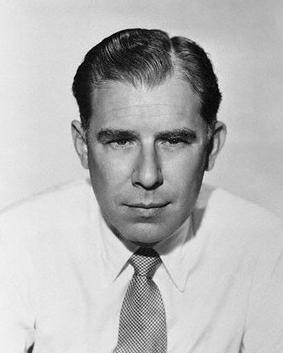
George Seaton was an American screenwriter, playwright, film director and producer, and theater director. Seaton led several industry organizations, serving as a three-time president of the Motion Picture Academy of Arts and Sciences, president of the Writers Guild of America West and the Screen Directors Guild, and vice president of Motion Picture Relief Fund. He won two Academy Awards for his screenplays.

Eleanor Jean Parker was an American actress and singer. She was nominated for three Academy Awards for her roles in the films Caged (1950), Detective Story (1951), and Interrupted Melody (1955), the first of which won her the Volpi Cup for Best Actress. She was also known for her roles in the films Of Human Bondage (1946), Scaramouche (1952), The Naked Jungle (1954), The Man with the Golden Arm (1955), A Hole in the Head (1959), The Sound of Music (1965), and The Oscar (1966).
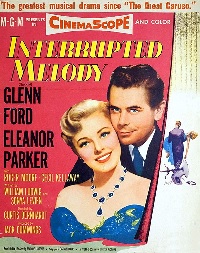
Interrupted Melody is a 1955 American musical biopic film starring Eleanor Parker, Glenn Ford, Roger Moore, and Cecil Kellaway. Directed by Curtis Bernhardt, it was filmed in CinemaScope and Eastman Color, and produced for Metro-Goldwyn-Mayer by Jack Cummings. With a screenplay by Lawrence, Sonya Levien, and William Ludwig, the operatic sequences were staged by Vladimir Rosing, and Eileen Farrell provided the singing voice for Parker. It tells the story of Australian soprano Marjorie Lawrence's rise to fame as an opera singer and her subsequent triumph over polio with her husband's help

Green Fire is a 1954 American CinemaScope and Eastmancolor adventure drama film released by Metro-Goldwyn-Mayer. It was directed by Andrew Marton and produced by Armand Deutsch, with original music by Miklós Rózsa. The picture stars Grace Kelly, Stewart Granger, Paul Douglas and John Ericson.

That's Entertainment! is a 1974 American compilation film released by Metro-Goldwyn-Mayer to celebrate the studio's 50th anniversary. The success of the retrospective prompted a 1976 sequel, the related 1985 film That's Dancing!, and a third installment in 1994.

Robert L. Surtees was an American cinematographer who won three Academy Awards for the films King Solomon's Mines, The Bad and the Beautiful and the 1959 version of Ben-Hur. Surtees worked at various studios, including Universal, UFA, Warner Brothers, and MGM, lighting for notable directors Howard Hawks, Mike Nichols, and William Wyler, gaining him a reputation as one of the most versatile cinematographers of his time.
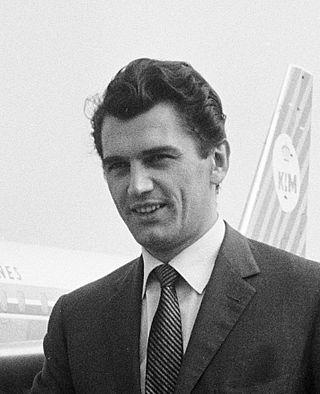
Edmund Cutlar Purdom was an English actor, voice artist, and director. He worked first on stage in Britain, performing various works by Shakespeare, then in The United States on Broadway and in Hollywood, and eventually in Italy. He is perhaps best known for his starring role in 1954's historical epic The Egyptian.

Juan Carlos Mundin-Schaffter, known as Carlos Thompson, was an Argentine actor.

Elephant Walk is a 1954 American drama film produced by Paramount Pictures, directed by William Dieterle, and starring Elizabeth Taylor, Dana Andrews, Peter Finch and Abraham Sofaer. It is based upon the 1948 novel Elephant Walk by "Robert Standish", the pseudonym of the English novelist Digby George Gerahty (1898–1981).
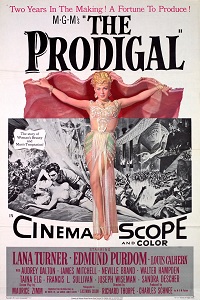
The Prodigal is a 1955 Eastmancolor biblical epic CinemaScope film made by MGM starring Lana Turner and Edmund Purdom. It was based on the New Testament parable about a selfish son who leaves his family to pursue a life of pleasure. The film also features James Mitchell, Louis Calhern, Joseph Wiseman, Cecil Kellaway, Audrey Dalton, and Walter Hampden. Dancer Taina Elg made her film debut in The Prodigal.
Charles Schnee was an American screenwriter and film producer. He wrote the scripts for the Westerns Red River (1948) and The Furies (1950), the social melodrama They Live by Night (1949), and the cynical Hollywood saga The Bad and the Beautiful (1952), for which he won an Academy Award.

The Egyptian is a 1954 American epic historical drama film made by 20th Century-Fox. Filmed in CinemaScope with color by DeLuxe, it was directed by Michael Curtiz and produced by Darryl F. Zanuck. It is based on Mika Waltari's 1945 novel of the same name and the screenplay was adapted by Philip Dunne and Casey Robinson. Leading roles were played by Edmund Purdom, Bella Darvi, Jean Simmons, Victor Mature, Gene Tierney, Peter Ustinov, and Michael Wilding. Cinematographer Leon Shamroy was nominated for an Oscar in 1955.
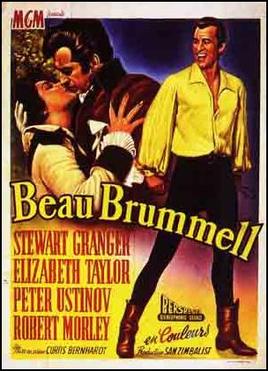
Beau Brummell is a 1954 British historical film released by Metro-Goldwyn-Mayer. It was directed by Curtis Bernhardt and produced by Sam Zimbalist from a screenplay by Karl Tunberg, based on the 1890 play Beau Brummell by Clyde Fitch. The play was previously adapted as a silent film made in 1924 and starring John Barrymore as Beau Brummell, Mary Astor, and Willard Louis as the Prince of Wales.

Ride, Vaquero! is a 1953 American Western film photographed in Ansco Color made by Metro-Goldwyn-Mayer (MGM). It was directed by John Farrow and produced by Stephen Ames from a screenplay by Frank Fenton and John Farrow. The music score was by Bronislau Kaper and the cinematography by Robert Surtees.
Robert Pirosh was an American screenwriter and film director. He is most known for his war and military-themed works, inspired by his experiences as a U.S. Army infantryman during World War II. He won an Academy Award for Best Original Screenplay for Battleground (1949), a semi-autobiographical account the Battle of the Bulge. He was nominated for a second Oscar for Go for Broke! (1951), a film about the 442nd Regimental Combat Team.

The Shrike is a 1955 American film noir drama film based on Joseph Kramm's play of the same name. José Ferrer directed and starred in Ketti Frings' screenplay adaptation.

Magic Fire is a 1955 American biographical film about the life of composer Richard Wagner, released by Republic Pictures.

The King's Thief is a 1955 swashbuckling CinemaScope adventure film directed by Robert Z. Leonard, who replaced Hugo Fregonese during filming. Released on August 5, 1955, the film takes place in London at the time of Charles II and stars Ann Blyth, Edmund Purdom, David Niven, George Sanders and Roger Moore.

Many Rivers to Cross is a 1955 American colonial Western film shot in CinemaScope directed by Roy Rowland and starring Robert Taylor and Eleanor Parker.

Sombrero is a 1953 American musical romance film directed by Norman Foster and starring Ricardo Montalbán, Pier Angeli, Vittorio Gassman and Cyd Charisse. The film is based on the 1945 book Mexican Village by Josefina Niggli, a collection of 11 short stories set in the north Mexican town of Hidalgo. In his long review for the October 16, 1945 issue of The New York Times, Orville Prescott calls it "remarkable...one of the finest books about Mexico I have ever read.”



















